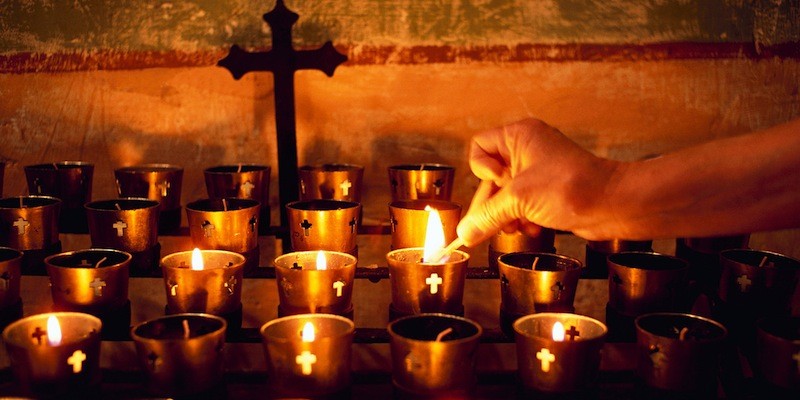Catholic Life and Devotion
Apr 1st, 2014 | By Andrew Preslar | Category: Blog Posts, Catholic Life and DevotionOn the Index page of Called to Communion, there is a section entitled “Catholic Life and Devotion.” This section features reflections on life in the Catholic Church based upon CTC contributors’ growing experiences as members of the Church in full communion.
There are three reasons for calling attention to this section of our website: First, as time goes by, converts naturally come to focus less on the process of becoming Catholic and more on simply being Catholic. We want this refocusing to be expressed on our website without in any way displacing or diminishing the purpose of this site, which is to facilitate dialogue between Catholic and Protestants who desire unity in truth. Secondly, non-Catholic onlookers, both critics and inquirers, are often curious about daily life and devotion in the Catholic Church. “Catholic Life and Devotion” provides us with a distinct forum in which to discuss being Catholic in addition to our many discussions of the reasons for and against becoming Catholic. Finally, although we have already written several blog posts along this line, in the near future we intend to write more of these posts (without writing less of the other kinds of posts) by way of sharing with you some of what we are discovering as members of the Catholic Church.
One of the ways that the “Catholic Life and Devotion” blog posts are distinguished from “regular” blog posts and articles is that the latter usually feature arguments and evidence for some thesis that we wish our readers to consider, to the end of resolving some dispute or misunderstanding. The “Catholic Life and Devotion” posts, on the other hand, are generally more descriptive and personal in nature. Typically, these posts will also be shorter than regular blog posts.
As might be expected in a world-wide Church with some 1.2 billion members, more than 20 liturgical rites, and 23 particular churches (cf. Catholic Rites and Churches), Catholic life and devotion features a lot of diversity within the unity of full communion. Among other ways, some of this diversity is exemplified at CTC by virtue of the fact that three of our members are Eastern Catholic (Romanian, Ruthenian, and Ukrainian Churches, respectively, each of which observes the Byzantine Rite), while the majority belong to the Latin Church (Roman Rite). The Latin Church itself features a variety of liturgical rites, uses, and forms. Within this diversity, there are numerous other small “t” traditions that have sprung up and developed in this particular Church over the centuries, including distinctive forms of spirituality, most notably exemplified in the various religious orders. Furthermore, the Latin Church comprehends an enormous diversity of cultures and societies. On the principle of grace building upon nature, each of these, as its members also become members of the Church, has contributed something distinctive to Catholic life and devotion.
Not forgetting our common background in the world of conservative Presbyterian and Reformed denominations, but rather being thankful for the graces we received in those communities, gifts which are “forces impelling toward catholic unity,” we would like to share something of what we have found in this catholic unity, which we believe “subsists in the Catholic Church as something she can never lose, and we hope that it will continue to increase until the end of time” (Unitatis Redintegratio, 4). Hopefully, sharing our experiences of living and worshiping in the Catholic Church, following her Tradition and traditions, will serve to increase catholic unity, not by subtraction of the good we found in Protestantism, but by addition of the good that we are finding in Catholicism.



Thanks, Andrew. These posts could be very useful to some of us joyful and yet shell-shocked newish Catholics.
Ave Maria!
This sounds great!
As one who is moving out of the “Convert” stage to “just Catholic” stage, I am looking forward to more posts by people from different backgrounds “settling in” to the Faith.
I am currently finding that deepening my understanding of the atonement (from penal substitutionary atonement, in which positing human participation would be blasphemous, to substitutionary atonement, in which our participation of a “gift of self” to God which, because of sin, takes place largely in suffering) is helping me to better understand our union with Christ Crucified, particularly in the areas of Our Lady’s Coredemption and Penance.
Ave Maria!